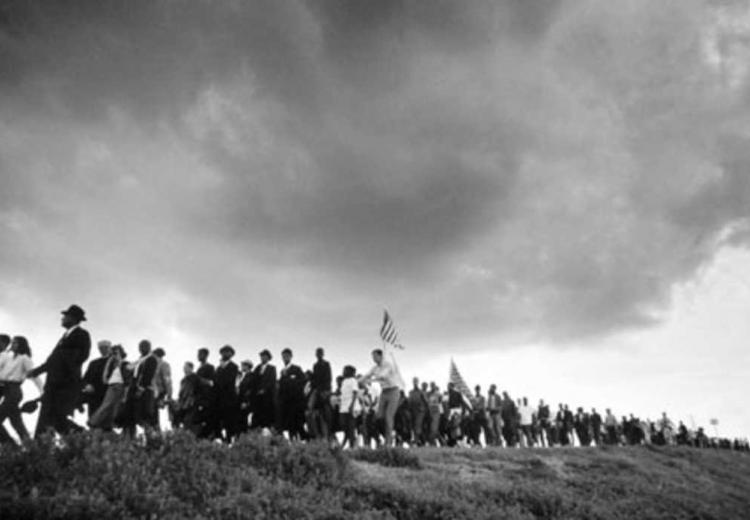Picturing Freedom: Selma-to-Montgomery in March, 1965

James Karales (1930-2002), Selma-to-Montgomery March for Voting Rights in 1965.
Photo James Karales. © Estate of James Karales.
"Photography is a small voice, at the best sometimes-just sometimes-one photograph or a group of them can lure our senses into awareness…"
—W. Eugene Smith, photojournalist and Karales's mentor
Why did thousands march over 50 miles through cold, Alabama rain in 1965? In this lesson, students learn about the Selma-to-Montgomery voting rights march. After analyzing photojournalist James Karales's iconic photograph of the march, reading background material on it, and considering what the marchers might have thought and felt, students write and illustrate a postcard describing this civil rights event from a marcher's viewpoint.
Guiding Questions
What role has photography played in the long civil rights movement?
To what extent has media influenced public opinion and public policy regarding civil rights?
Learning Objectives
Evaluate the role of photojournalists and media organizations in the passage of the Voting Rights Act of 1965.
Discuss the extent to which Karales's photograph is emblematic of the civil rights movement.
Analyze the ways in which art and politics continue to interact around civil rights in U.S. history.

